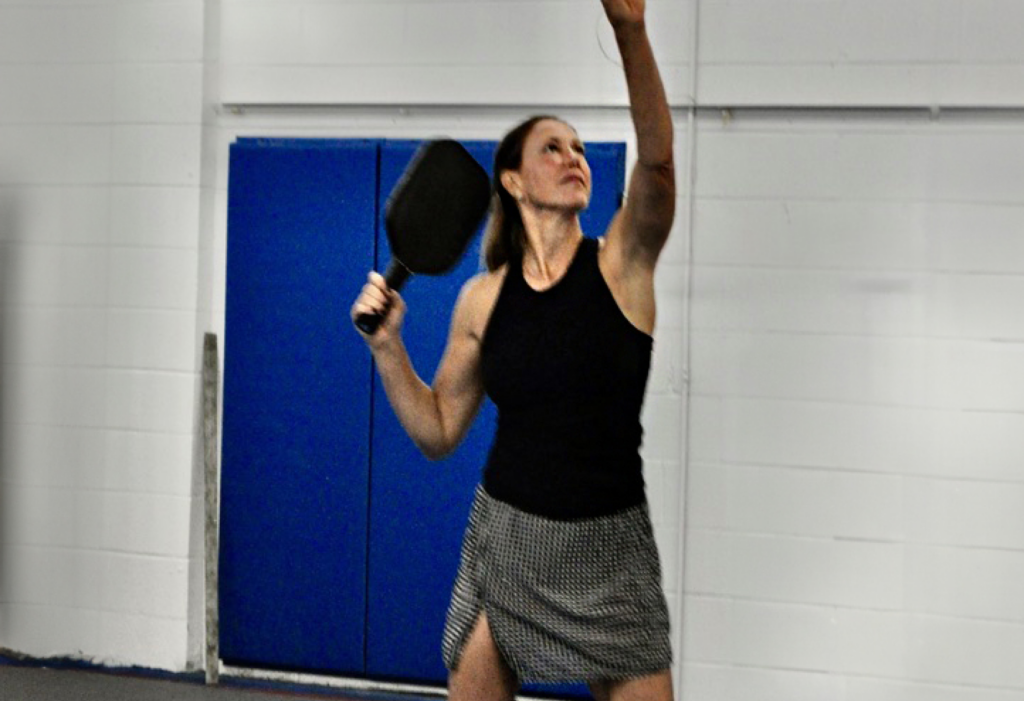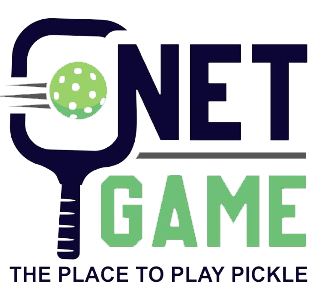Play Pickleball
Easy to learn, impossible to resist.
Get in the game!

For Fun or Practice
Open Play
Open Play is a dynamic and inclusive way to enjoy pickleball. Come together with players at a similar level of play to engage in friendly matches, improving your game and connecting with fellow enthusiasts.
Reserve a Court
Already know when and who you want to play with? Book a pickleball court with your friends so you’ll never have to wait to get on the court.
Match Up
Don’t have a partner? A Net Game pickleball Pro will help you find players of a similar level to hit the courts for a perfect balance of challenge and fun, while meeting new players.
Elevate Your Game
Clinics
Our pickleball clinics are designed to cater to players of all levels, schedules, and competitive spirits. Whether you’re just starting to play pickleball or looking to sharpen your skills, there’s a clinic for you. By registering for our clinics, you not only gain access to top-notch instruction, but you also benefit from a low player-to-pro ratio.
Lessons
Regardless of where you are in your pickleball journey, lessons provide the perfect opportunity to grow as a player. Lessons are tailored to your specific needs and are available in a variety of formats.
Drills
Pickleball drills are structured group lessons designed to improve players’ skills and performance. Drills encompass a wide range of exercises and activities focusing on various aspects of the game, such as serving, volleys, dinking, footwork and strategy. Drills are essential to honing technique, enhancing consistency and mastering the fundamentals of pickleball.


Ready to Compete
Leagues
Pickleball leagues are the heart of friendly competition, bringing similarly skilled players together for fun matches and carmaraderie. Leagues offer a structured, fun way to challenge your skills and connect with fellow players.
Tournaments
Net Game hosts tournaments for players of all levels in various formats. Join to play in thrilling competition or for a front row seat to watch the action of pro player tournaments.
Rules of Pickleball
- Pickleball is played either as doubles (two players per team) or singles; doubles is most common.
- The same size playing area and rules are used for both singles and doubles.
- Any fair method can be used to determine which player or team has first choice of side, service, or receive. (Example: Coin Flip, Paddle Spin, First Service on Outside Fence/Wall).
- The server’s arm must be moving in an upward arc when the ball is struck.
- Paddle contact with the ball must not be made above the waist level.
- The head of the paddle must not be above the highest part of the wrist at contact.
- At the time the ball is struck, the server’s feet may not touch the court or outside the imaginary extension of the sideline or centerline and at least one foot must be behind the baseline on the playing surface or the ground behind the baseline.
- As subsequent points are scored, the server continues switching back and forth until a fault is committed and the first server loses the serve.
- When the first server loses the serve the partner then serves from their correct side of the court (except for the first service sequence of the game*).
The second server continues serving until his team commits a fault and loses the serve to the opposing team.
- Once the service goes to the opposition (at side out), the first serve is from the right-hand court and both players on that team have the opportunity to serve and score points until their team commits two faults.
- In singles the server serves from the right-hand court when his or her score is even and from the left when the score is odd.
*At the beginning of each new game only one partner on the serving team has the opportunity to serve before faulting, after which the service passes to the receiving team.
- Points are scored only by the serving team.
- Games are normally played to 11 points, win by 2.
- Tournament games may be to 15 or 21, win by 2.
- When the serving team’s score is even (0, 2, 4, 6, 8, 10) the player who was the first server in the game for that team will be in the right-side court when serving or receiving; when odd (1, 3, 5, 7, 9) that player will be in the left-side court when serving or receiving.
- The serve is made diagonally crosscourt and must land within the confines of the opposite diagonal court.
- Only one serve attempt is allowed per server.
- Both players on the serving doubles team have the opportunity to serve and score points until they commit a fault *(except for the first service sequence of each new game).
- The first serve of each side-out is made from the right-hand court.
- If a point is scored, the server switches sides and the server starts next serve from the left-hand court.
- When the ball is served, the receiving team must let it bounce before returning, and then the serving team must let it bounce before returning, thus two bounces.
- After the ball has bounced once in each team’s court, both teams may either volley the ball (hit the ball before it bounces) or play it off a bounce (ground stroke).
- The two-bounce rule eliminates the serve and volley advantage and extends rallies.
- The non-volley zone is the court area within 7 feet on both sides of the net.
- Volleying is prohibited within the non-volley zone. This rule prevents players from executing smashes from a position within the zone.
- It is a fault if, when volleying a ball, the player steps on the non-volley zone, including the line and/or when the player’s momentum causes them or anything they are wearing or carrying to touch the non-volley zone including the associated lines.
- It is a fault if, after volleying, a player is carried by momentum into or touches the non-volley zone, even if the volleyed ball is declared dead before this happens.
- A player may legally be in the non-volley zone anytime other than when volleying a ball.
- The non-volley zone is commonly referred to as “the kitchen.”
- A ball contacting any line, except the non-volley zone line on a serve, is considered “in.”
- A serve contacting the non-volley zone line is short and a fault.
- A fault is any action that stops play because of a rule violation.
- A fault by the receiving team results in a point for the serving team.
- A fault by the serving team results in the server’s loss of serve or side out.
- A fault occurs when:
- A serve does not land within the confines of the receiving court
- The ball is hit into the net on the serve or any return
- The ball is volleyed before a bounce has occurred on each side
- The ball is hit out of bounds
- A ball is volleyed from the non-volley zone
- A ball bounces twice before being struck by the receiver
- A player, player’s clothing, or any part of a player’s paddle touches the net or the net post when the ball is in play
- There is a violation of a service rule
- A ball in play strikes a player or anything the player is wearing or carrying
- A ball in play strikes any permanent object before bouncing on the court

